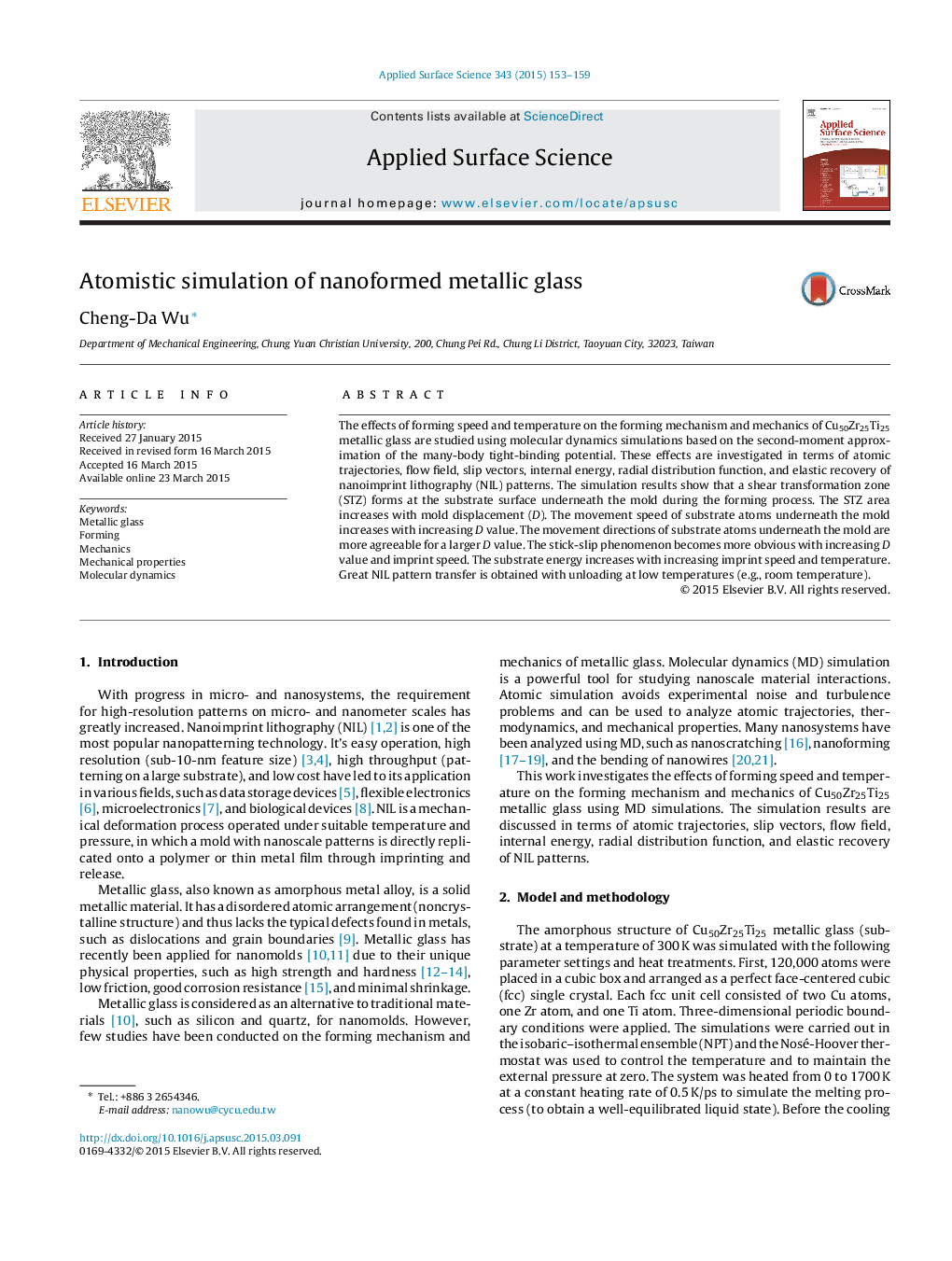| Article ID | Journal | Published Year | Pages | File Type |
|---|---|---|---|---|
| 5348485 | Applied Surface Science | 2015 | 7 Pages |
Abstract
The effects of forming speed and temperature on the forming mechanism and mechanics of Cu50Zr25Ti25 metallic glass are studied using molecular dynamics simulations based on the second-moment approximation of the many-body tight-binding potential. These effects are investigated in terms of atomic trajectories, flow field, slip vectors, internal energy, radial distribution function, and elastic recovery of nanoimprint lithography (NIL) patterns. The simulation results show that a shear transformation zone (STZ) forms at the substrate surface underneath the mold during the forming process. The STZ area increases with mold displacement (D). The movement speed of substrate atoms underneath the mold increases with increasing D value. The movement directions of substrate atoms underneath the mold are more agreeable for a larger D value. The stick-slip phenomenon becomes more obvious with increasing D value and imprint speed. The substrate energy increases with increasing imprint speed and temperature. Great NIL pattern transfer is obtained with unloading at low temperatures (e.g., room temperature).
Related Topics
Physical Sciences and Engineering
Chemistry
Physical and Theoretical Chemistry
Authors
Cheng-Da Wu,
